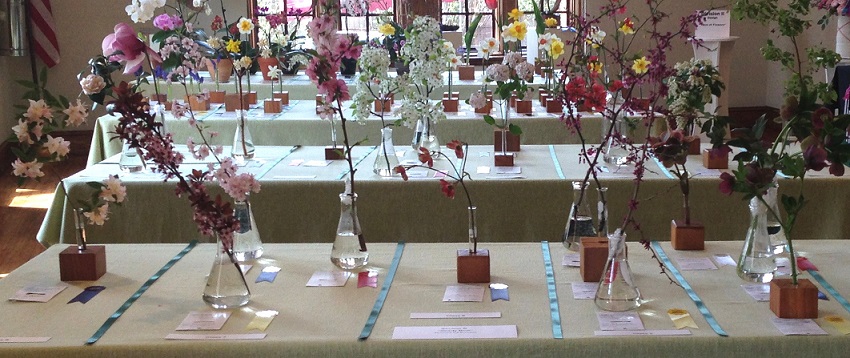NGC Flower Shows

What is a Flower Show?
A flower show is not only a beautiful collection of specimens and designs, but a prime opportunity to capture the wonder and minds of the viewing public and club members. Flower shows stimulate interest in growing and showing horticulture, creating floral designs, and expressing creativity. It can be an invaluable way to educate and share knowledge of National Garden Clubs from local organizations to national goals and objectives. A flower show can be as simple as an intimate gathering or be a large celebration of horticulture. At any scale a flower show brings community members together to learn, grow, and display.
Take the Mystery out of Flower Shows
THE HORTICULTURE DIVISION
As one of the two most important Divisions of a Flower Show, the Horticulture Division gives us the opportunity to see plants at their best. Excellence in exhibiting standards, clean unblemished specimens, and variety of genus, species, and cultivars, give the gardener inspiration to find new ideas for growing plants they may not have considered before. The Horticulture Division is an opportunity for local amateur growers to showcase their work and connect with other gardeners to share knowledge and expertise in gardening skills.
In a Standard Flower Show there must be a minimum of five (5) Horticulture classes and a total of 20 exhibits with no minimum number of exhibits per class. Classes are chosen based on seasonal availability and interests of club members. Exhibits can range from cut specimens of flowers, foliage of plants or trees to container grown specimens. Exhibits are judged using Scales of Points listed in the Handbook for Flower Shows, 2017 Edition with revision listed on the NGC website.
THE DESIGN DIVISION
This Division is a creativity showcase where those who love to design and arrange flowers can express their style. The show’s theme along with class titles, inspire the exhibitors to interpret the classes in a creative way. The schedule states the type of staging which will be used. This can be tables, pedestals, frames, floor area, and many other possibilities based on the skills and experience of club members. Designs may be traditional or creative or reflect a certain style. The schedule may require specific plant material or specific sizes. Functional table designs as well as exhibition tables may be included. The Handbook for Flower Shows, 2017 edition suggests a variety of designs styles and types with descriptions for all that may be used in a show.
Small Standard Flower Shows require three (3) classes of Design with a minimum of four (4) exhibits in each class. A Standard Flower Show requires five (5) classes of Design with a minimum of four (4) exhibits in each class. Exhibits are judged using the principals and elements of design and using the Scales of Points listed in the Handbook for Flower Shows, 2017 Edition with revisions listed on the NGC website.
EDUCATION DIVISION
One of the best ways to educate the public is with an informative Educational Display. The topics can be of local or national concerns or may address environmental issues. They may relate to the theme of the show and be instructive. To be eligible for an Educational Top Exhibitor award, at least two (2) exhibits are necessary. They may be created by one or more exhibitors and may include handouts if appropriate.
YOUTH AND SPONSORED GROUPS DIVISION
A great way to teach children about the joys of growing and showing plants is to include them in a Flower Show. This Division was created for garden club Youth Groups and Adult Groups that are given leadership, programs, workshops, or financial assistance by local garden clubs. Youth exhibits do not compete with adults in the show and are divided into categories by age groups stated in the schedule. Youth must be 18 years old or younger to compete. Youth and Sponsored Groups may compete in Horticulture, Design, Education and Botanical Arts within the Youth and Sponsored Groups Division.
BOTANICAL ARTS DIVISON
Public interests extend beyond the Horticulture and Design arears of the show. This Division may include popular exhibits such as crafts, collages, plaques, fairy gardens, dried flowers, wearable art, and photography. It brings together more members who can show off their talents in different ways and it brings interest to the show.
Flower Show Schedules
Interested in holding a flower show? Here are sample flower show schedules to view, reference and use to write your club's flower show schedule:
Small Standard Flower Show Schedule
Standard Flower Show
How to Write Awards in a Schedule
Contact us to request more information and ask any schedule questions.
Mentoring Program
|
This is a club friendly mentoring program that is designed to promote flower shows with support for garden clubs who have not had a flower show in the last 5 years. The Judges Council provides a mentor judge who encourages clubs by providing information and organizational support on schedule writing, awards, and procedures and guides the club through the flower show process.
|

 Member Login
Member Login

